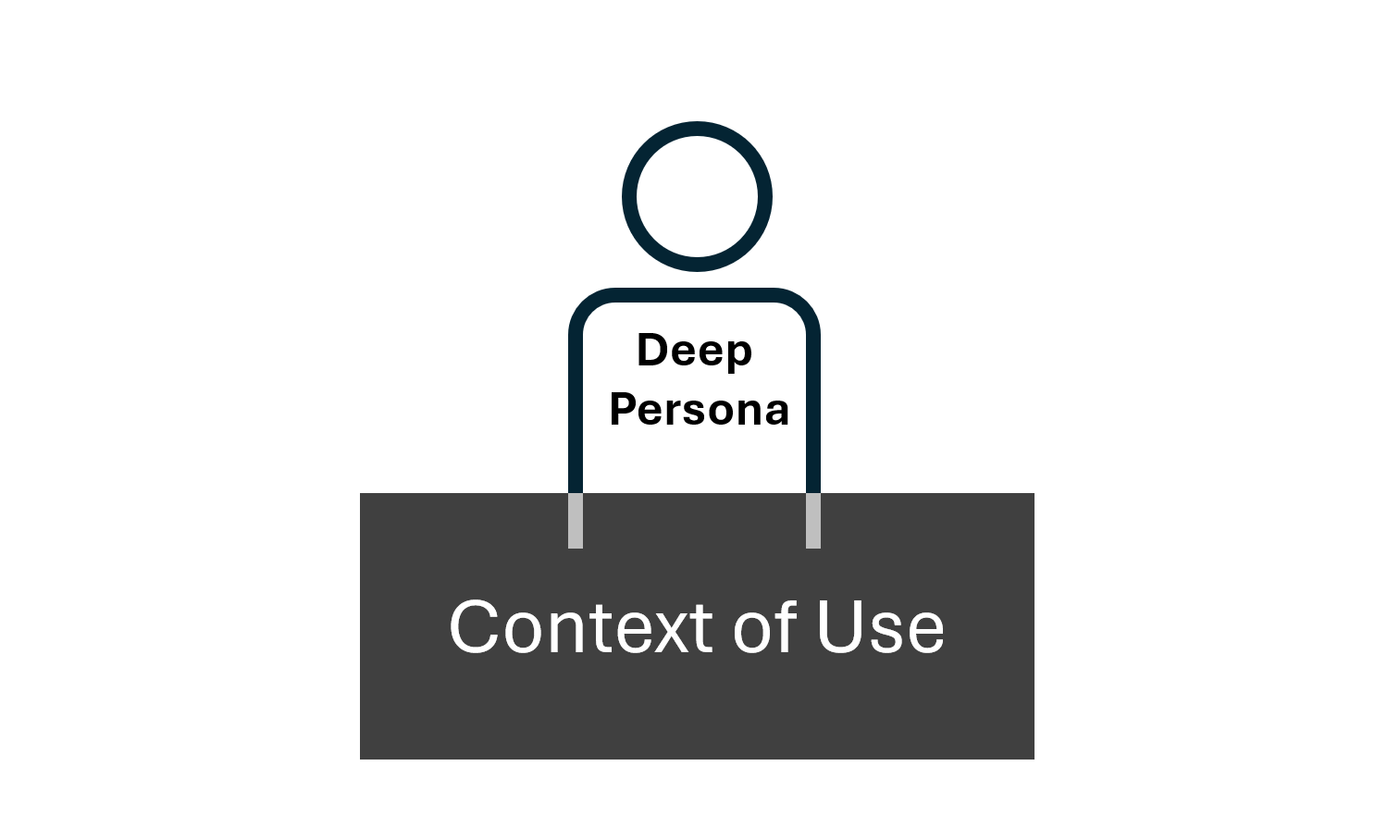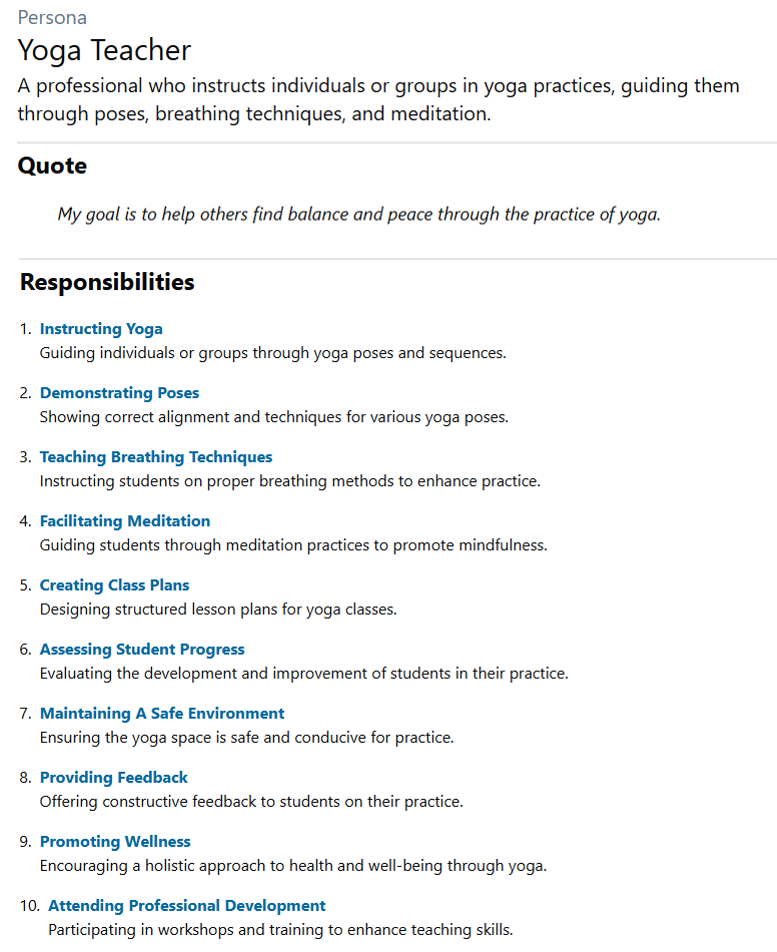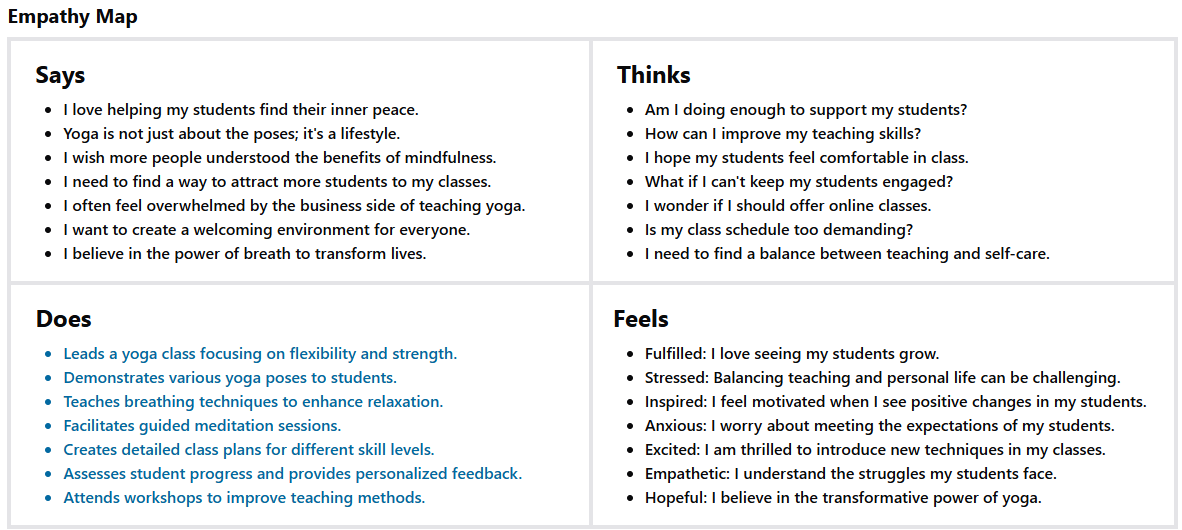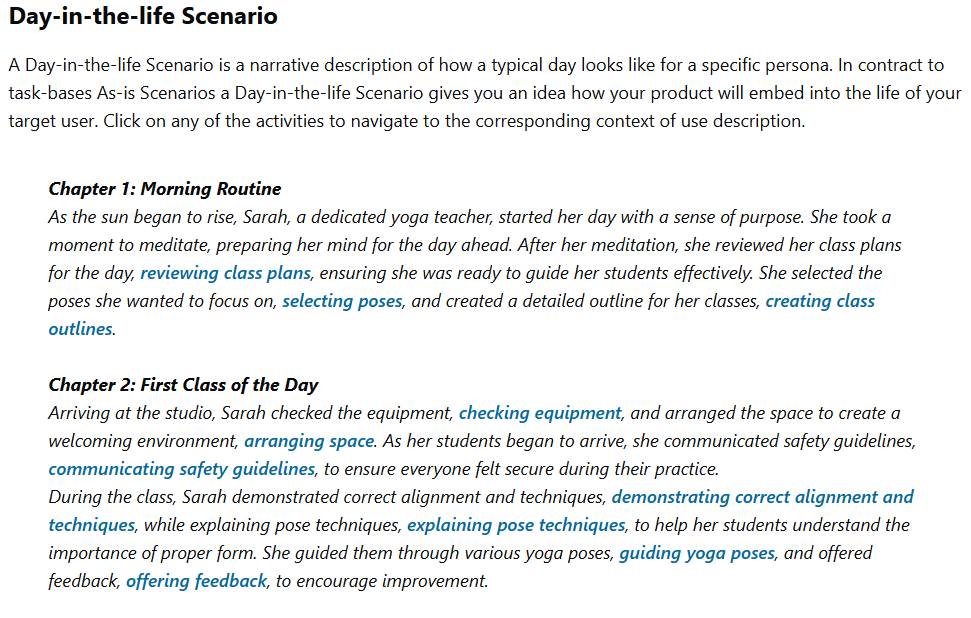
Introducing Deep Personas
Introducing Deep Personas
The pros and cons of using user personas as a design tool have been widely debated. While popular ideation sessions for early design discussions and for seeding empathy with a target user, personas are not the interaction designer's best friend when it comes to designing the product. The description of a persona tends to be shallow and fragmented, leaving interaction designers with limited design input when modelling task flows, task objects and formulating user stories for agile development planning. This gap between the design brief and the actual design work tends to force interaction designers to do some ad hoc task modeling to compensate for the lack of detailed user requirements. Often, the designers do not have direct access to users at this point because early discovery has already been completed, and the next sprint is waiting for wireframes.
Our AI-Agent Product Context Analyzer solves this problem by introducing “deep personas” that link descriptions of personas to the corresponding task models including subtasks, pain points, intended outcomes, user requirements, and user story maps.
How to generate a Deep Persona
To generate a deep persona in Product Context Analyzer, simply enter the name of a role or a persona without stating a task or activity. The Product Context Analyzer will then start the context analysis for the specified persona and comes back with a persona profile and a detailed analysis of the tasks this persona is typically performing. This output serves as design input in early phases as well as providing detailed task-related user requirements in later phases. This ensures a smooth transition from the high-level output of a strategic design workshop to information that serves as effective design input for UX professionals who are tasked to detail out the design brief.
Bridging the Gap between Personas and Detailed User Requirements
When automatically creating a new persona, the Product Context Analyzer generates a detailed context of use description for all identified responsibilities and task. This description contains all task flows, and task-related pain points and goals. In addition, the Product Context Analyzer is generating a persona description including a day-in-the-life story, and empathy map. These artifacts include deep links to related tasks that are part of the context of use description.
Let's look at sample outputs of the Product Context Analyzer when analyzing the role "Yoga Teacher". Figure 1 shows the header of the persona description generated by the Product Context Analyzer

In this example, the Product Context Analyzer identified 10 responsibilities for the Persona "Yoga Teacher", and identified in total 40 tasks and 191 subtasks within these responsibilities, which are not shown in figure 1.
Figure 2 shows the Empathy Map that has been automatically generated by the Product Context Analyzer for the persona "Yoga Teacher". The map has four sections. The left half documents observable behavior, such as what the persona is saying and doing. The right half captures hidden, non-verbal thoughts and moods. The map helps you to not limit the analysis to pragmatic goals related to tasks, but to understand the overall affective state of a persona. Since the lower-left "Does"-quadrant contains a list of activities the persona is actually doing, they are written in blue and deep link to the responsibilities that have been identified in the context of use analysis. Clicking on a deep link allows you to navigate from the empathy map to the corresponding responsibility and the related tasks with pain points and goals.

Figure 3 shows the beginning of a Day-in-the-life story that was also generated by the Product Context Analyzer for the persona "Yoga Teacher". This narrative story contains embedded deep links in blue color, which link to the corresponding task within the context of use analysis. This allows you to navigate from a high-level narrative story to a well-structured detailed task analysis of the very same task.

This deep linking between persona descriptions and the detailed context-of-use informtion becomes possible because of the unique way the Product Context Analyzer is generating multiple research deliverables like personas, job maps, task models, and journey maps in a single fully automated run. All these outputs are based on the same automatically generated context-of-use description. This approach creates a coherent set of requirements which are all based on the same analysis. This helps prevent multiple team members from creating disconnected requirements at different stages of the design and implementation process.
Curious to see a Deep Persona?
Try the free 30-day trial to generate a deep persona for you own project context. Just enter the title of your persona and you will get back a deep persona that includes high-level artifacts and detailed context-of-use description as shown in the above examples.